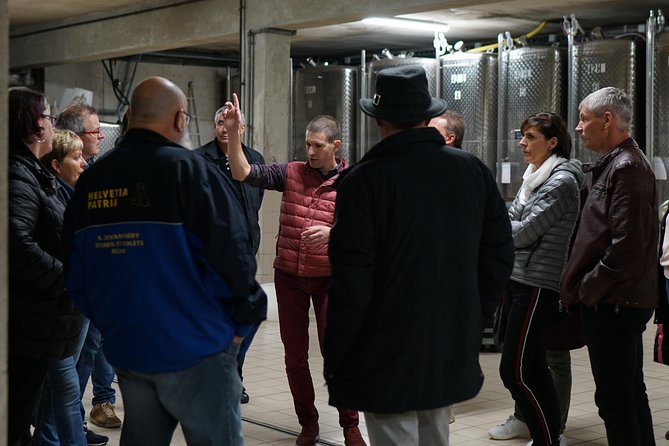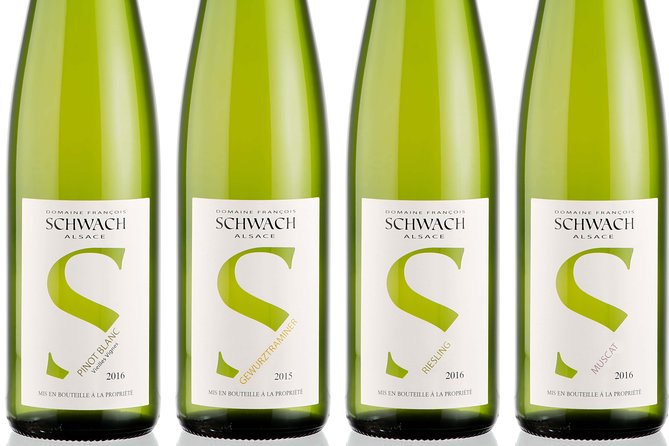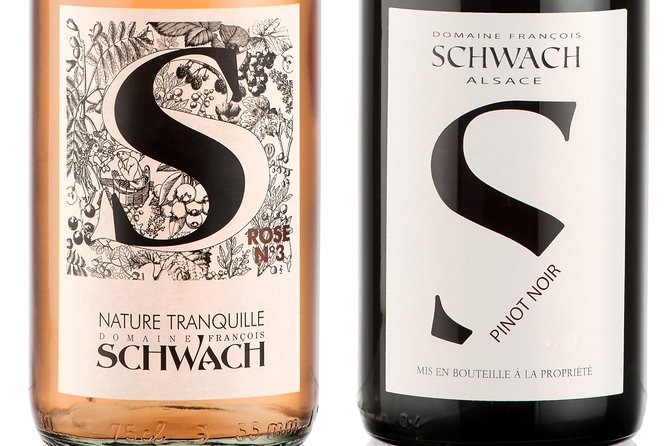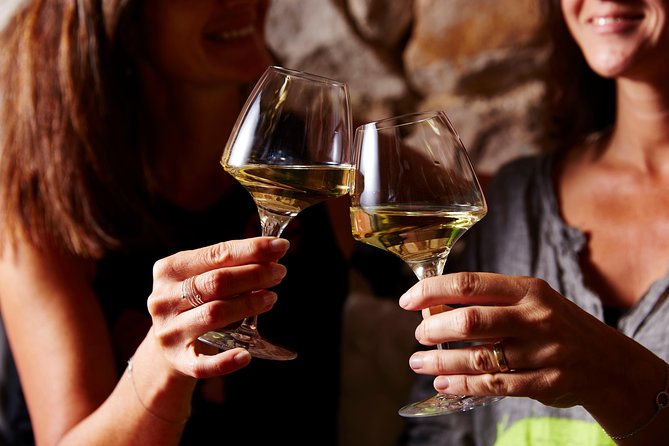Alsace wines are a unique and captivating chapter in the story of French viticulture. Nestled in the picturesque northeastern corner of the country, this celebrated region produces a diverse array of white varietals that dazzle the senses. From the crisp acidity and aromatic profiles of Riesling to the lush, spicy notes of Gewürztraminer, Alsatian wines offer an unparalleled sensory experience. With a long and storied winemaking heritage, the vineyards of Alsace have mastered the art of coaxing remarkable flavors from their cool continental terroir. Discover why this unique corner of France has captivated wine enthusiasts the world over.
This experience made our list of the 19 Best Wine Tours In Colmar.
Key Points

- Alsace is a renowned wine region in northeastern France, known for producing diverse and distinctive white wines.
- The region’s cool continental climate is ideal for growing aromatic grape varieties like Riesling, Gewürztraminer, and Pinot Blanc.
- Alsatian wines are characterized by their crisp acidity, complex flavor profiles, and versatility in food pairings.
- The diverse terroir of the region, with its limestone, sandstone, and volcanic soils, contributes to the unique characteristics of Alsatian wines.
- Alsatian winemakers employ meticulous techniques and traditional methods, such as extended lees aging, to craft wines of exceptional quality and authenticity.
Overview of Alsatian Wines

Alsace is a renowned wine region in northeastern France, producing a diverse array of white wines that are distinct from other French wine styles.
The region’s cool continental climate and unique terroir yield exceptional Riesling, Gewürztraminer, and Pinot Blanc varieties. Alsatian wines are known for their aromatic profiles, crisp acidity, and versatility at the table, ranging from bone-dry to lusciously sweet.
Viticulture in Alsace has a long and storied history, with techniques passed down through generations. Today, the region’s winemakers continue to refine their craft, creating world-class wines that showcase the unique characteristics of this distinctive wine-growing area.
Ready to swirl and sip more? More wine adventures we love in Colmar
Geography and Terroir of Alsace

The picturesque Vosges Mountains, which stretch along Alsace’s western border, play a crucial role in the region’s distinct terroir.
This mountain range acts as a barrier, shielding Alsace from the wet Atlantic winds and creating a rainshadow effect. As a result, the eastern side of the Vosges enjoys a continental climate with warm, dry summers and cold, snowy winters – ideal conditions for growing a variety of grape varieties.
The region’s diverse soil compositions, ranging from limestone and sandstone to volcanic rock, further contribute to the unique character of Alsatian wines.
This exceptional terroir allows winemakers to craft a wide array of styles, from crisp, aromatic whites to rich, full-bodied reds.
Grape Varieties of Alsace

Winemakers in Alsace cultivate a diverse array of grape varieties, each with its own distinct characteristics and contribution to the region’s celebrated wines.
The most widely grown white grape is Riesling, prized for its aromatic intensity and ability to reflect the region’s distinct terroir. Gewürztraminer, Pinot Gris, and Muscat are also important, lending luscious fruit flavors and varying degrees of sweetness.
Among the red grapes, Pinot Noir stands out, producing elegant, light-bodied wines. Lesser-known varieties like Sylvaner and Auxerrois add complexity and balance to Alsatian blends.
This diversity allows winemakers to craft a remarkable range of styles, from bone-dry to lusciously sweet, showcasing Alsace’s exceptional versatility.
Winemaking Techniques in Alsace
Drawing on centuries-old traditions, winemakers in Alsace employ a range of meticulous techniques to craft their renowned white and red wines.
From careful harvesting and pressing to temperature-controlled fermentation, Alsatian vintners prioritize quality and authenticity. Many utilize stainless steel tanks or large oak casks to achieve desired flavor profiles, while some employ the traditional Élevage process, involving extended lees aging.
The region’s unique geology and climate also shape winemaking, with producers leveraging Alsace’s diverse terroirs to cultivate specific grape varieties.
Tasting Notes: Alsatian Wine Profiles
Alsatian wines showcase a remarkable range of grape varieties and distinctive flavor profiles, enticing oenophiles with their nuanced complexity.
From the crisp, mineral-driven Rieslings to the lush, aromatic Gewürztraminers, each sip offers a unique sensory experience. The region’s cool climate and diverse terroirs impart distinctive characteristics, with some wines boasting notes of citrus, stone fruits, or even subtle spice.
Pinot Gris exhibits a delicate balance of richness and acidity, while Pinot Blanc delivers refreshing elegance.
Visitors exploring Alsace’s wine scene are sure to discover a captivating array of styles that showcase the region’s winemaking prowess and the versatility of its grape varieties.
Food Pairings With Alsatian Wines

The diversity of Alsatian wines pairs remarkably well with a wide range of cuisines, allowing diners to expertly complement their meals.
The crisp, dry Rieslings and Pinot Gris pair beautifully with seafood dishes, showcasing the wines’ bright acidity and mineral notes.
Hearty Alsatian dishes like choucroute garnie, a sauerkraut-based casserole, find harmony with the fuller-bodied Gewürztraminers and Pinot Noirs, whose rich flavors and smooth textures stand up to the robust fare.
Even dessert courses can be elevated with a glass of the region’s luscious, late-harvest Rieslings or Vendanges Tardives.
With its versatile and food-friendly wines, Alsace offers endless opportunities for memorable pairings that enliven the senses.
Notable Alsatian Wine Producers
As one of the most renowned wine regions in France, Alsace is home to a myriad of acclaimed wine producers whose expertise and dedication have cemented the area’s reputation.
Among the most notable are Hugel & Fils, known for their exceptional Rieslings, and Domaine Zind-Humbrecht, renowned for their biodynamic winemaking practices.
Trimbach, another iconic producer, offers a range of exceptional vintages that showcase the nuances of Alsatian terroir.
Domaine Weinbach, with its storied history, is celebrated for its complex and elegant Gewürztraminers.
These producers, along with many others, have played a pivotal role in establishing Alsace as one of the world’s premier wine destinations.
Planning Your Alsatian Wine Experience
Planning your Alsatian wine experience begins with understanding the various wine-tasting opportunities available in the region. From private tours at renowned vineyards to guided tastings in charming towns, there are several ways to take in Alsace’s rich wine culture.
Consider these three key factors when crafting your itinerary:
-
Winery tours that provide insights into traditional production methods.
-
Tasting sessions featuring the diverse range of Alsatian grape varieties.
-
Opportunities to connect with knowledgeable staff who can recommend food pairings and suggest other local attractions.
Frequently Asked Questions
What Is the Average Price Range for Alsatian Wines?
The average price range for Alsatian wines is typically $19 to $30, though some rare or premium bottles can cost significantly more. The wines are known for their quality and diversity, from dry to sweet varieties.
How Long Do Alsatian Wines Typically Last Once Opened?
Alsatian wines typically last 3-4 days once opened, though some varietals like Riesling may last up to a week with proper storage. The wines’ high acidity and low tannins contribute to their ability to maintain freshness after opening.
Can Alsatian Wines Be Shipped Internationally?
Yes, Alsatian wines can typically be shipped internationally, though shipping costs and customs regulations may apply. Many wineries in Alsace offer international shipping options for their wines.
Are There Any Notable Alsatian Wine Festivals or Events?
There are several notable Alsatian wine festivals, including the Colmar International Wine Fair in June and the Alsace Wine Route events throughout the year. These festivals offer opportunities to sample a variety of local wines and learn about Alsatian winemaking traditions.
What Is the Best Time of Year to Visit Alsace for Wine Tasting?
The best time to visit Alsace for wine tasting is during the spring and fall when the region’s cool climate produces optimal growing conditions. Vineyards are lively with harvest activities, offering visitors an immersive wine tasting experience.
The Sum Up
Alsace wines offer a unique and captivating experience for wine enthusiasts. Their distinct character, shaped by the region’s exceptional terroir and winemaking traditions, sets them apart from other French styles. With a diverse array of aromatic white varietals and food-friendly profiles, Alsatian wines are a must-try for those seeking a memorable and distinctive wine journey.
More Wine Tours in Colmar
- Private Tour: Alsace Villages and Wine Day Trip From Colmar
- Safari Tour Village of the Vineyards: 1 Day, 4 Villages & 1 Wine Tasting
- The Most Beautiful Alsatian Villages in an Audi A5 Cabriolet by the Wine Route
- Medieval Alsace and Wine Tasting From Colmar
- Taste Alsace: Tasting of Our Alsace Wines – No Cellar Tour
- Private Tour: Alsace Wine Tasting Day Trip From Colmar
More Tour Reviews in Colmar
Not for you? Here's more things to do in Colmar we have recnetly reviewed
- 2 Best Shopping Tours In Colmar
- 7 Best Christmas Experiences In Colmar
- 4 Best Full-Day Tours In Colmar
- 3 Best Private Car With Driver Services In Colmar
- Explore Colmars Art and Culture With a Local
- Basel Mulhouse Freiburg Airport
- Crazy Senses!
- Alsace: Half-Day Wine Tour From Colmar
- Colmar: Christmas Market and City Highlights Walking Tour
- Cooking Class : Baking “Bredele” Alsatian Biscuits, Colmar
- Colmar: Unusual Walking Tour With a Local Guide
- From Colmar: 4 Wonders of Alsace Day Tour
